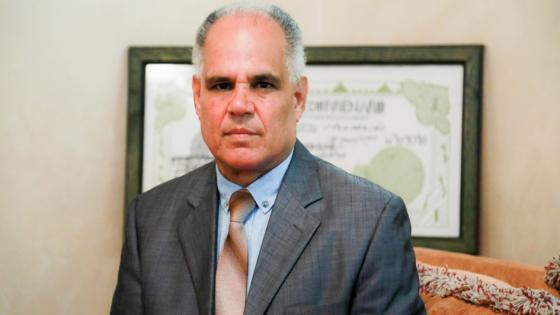Using the Stages of Team Development MIT Human Resources
You might still have to put out the occasional fire, but on high-performing teams, leaders can generally focus on monitoring progress, measuring results and celebrating achievements. Helpful tools include having the right technology and accurate metrics to measure team performance—as well as knowing how to throw a good party. When forming a team, leaders need to build trust, set expectations and encourage involvement. Creating a team charter is a great tool to help your team, as is conducting different kinds of “get to know you” activities. And its success or failure very much hinges on the knowledge and skill of its leadership.

To make the story more concrete, here’s a brief overview of the behaviors, feelings, group needs, and leadership needs in the Storming Stage. To make things more tangible, here’s a brief overview of the behaviors, feelings, group needs, and leadership needs in the Forming Stage. The final stage, adjourning, involves the termination of task behaviors and disengagement from relationships. A planned conclusion usually includes recognition for participation and achievement and an opportunity for members to say personal goodbyes. Concluding a group can create some apprehension – in effect, a minor crisis. The termination of the group is a regressive movement from giving up control to giving up inclusion in the group.
Support
Having a way to identify and understand causes for changes in the team behaviors can help the team maximize its process and its productivity. Each stage of team development has its own recognizable feelings and behaviors; understanding why things are happening in certain ways on your team can be an important part of the self-evaluation process. Team effectiveness is enhanced by a team’s commitment to reflection and on-going evaluation. In addition to evaluating accomplishments in terms of meeting specific goals, for teams to be high-performing it is essential for them to understand their development as a team.
- It’s important for the team as a whole that they learn to deal with some of their issues.
- Roles on the team may have become more fluid, with members taking on various roles and responsibilities as needed.
- Commitment to the team’s mission is high and the competence of team members is also high.
- At first, people are led by their natural desire to be liked by others and accepted among their peers.
- A good leader is someone who knows how to build these relationships genuinely and reap the results of productivity as a secondary reward.
- Older children do not just think more quickly than younger children.
Piaget believed that children take an active role in the learning process, acting much like little scientists as they perform experiments, make observations, and learn about the world. As kids interact with the world around them, they continually add new knowledge, build upon existing knowledge, and adapt previously held ideas to accommodate new information. During the first stage of psychosocial development, children develop a sense of trust when caregivers provide reliability, care, and affection. The first stage of Erikson’s theory of psychosocial development occurs between birth and 1 year of age and is the most fundamental stage in life. Because an infant is utterly dependent, developing trust is based on the dependability and quality of the child’s caregivers.
Signs and questions to look out for in the storming stage
It is also easy to look at each stage of Erikson’s theory and consider how it can apply to your life. Learning about each stage can provide insight into what you might face as you age. It can also help you reflect on things that may have happened in the past and help you see ways you might be able to improve your coping skills to better deal with today’s challenges. Researchers have found evidence supporting Erikson’s ideas about identity and have further identified different sub-stages of identity formation. The final psychosocial stage occurs during old age and is focused on reflecting back on life.
✉️ What are your thoughts on the 5 stages of group development, and do you plan to implement this framework in your work or life? Drop us a line at for a chance to be featured in this or one of our future articles. And, if you liked this blog post, share it with someone who might find it useful.
Production or People: What Should Pastors Prioritize?
No matter what type of team you’re forming, you probably shouldn’t expect its members to instantly bond and quickly reach the level of a high-performing team. ThoughtHub is a collection of knowledge to help you learn more about your favorite topics. Here you’ll find a variety of articles on subjects such as business, ministry, archaeology, communication, psychology, education and many more.

If the previous step “storming” is completed well and with minimal repercussions from any negative conflicts, the norming step will be a simple settling down of members and finding their groove. If “storming” is not done properly, however, “norming” can involve many team members checking out mentally or finding apathy for a project. Tuckman’s model for group development is known and widely taught among business owners. Tuckman’s model has shown great results across many different businesses and for many different leaders. It’s not uncommon for people to think or be told that they have a specific set of skills that allow them to be an above-average leader or an above-average team player. These skills are usually developed in early childhood and refined through high school.
What are the stages of group development?
It challenges models that postulate linear and sequential processes, and instead suggests that development is inherently unpredictable. Chaos theory argues that it’s unrealistic for a system to go through deterministic, predictable, and repeated stages. The transition is a powerful opportunity for a group to alter the course of its life midstream. At completion, when a team makes a final effort to satisfy outside expectations, it experiences the positive and negative consequences of past choices.
In other words, any team setting that requires high performance can benefit from using this model. Furthermore, Rebecca Stroud Stasel cites that people have natural, deeply seated tendencies for either leadership or following leaders. If group what are the four stages of team development members are able to evolve to stage four, their capacity, range, and depth of personal relations expand to true interdependence. In this stage, people can work independently, in subgroups, or as a total unit with equal competencies.
Click Play to Learn More About Erik Erikson’s Stages of Psychosocial Development
They respect and acknowledge each other’s skills, talents, and experience. In fact, they trust that everyone involved will do their share https://www.globalcloudteam.com/ of the work. In fact, Tuckman only added the fifth, Adjourning Stage, together with another expert, Mary Ann C. Jensen, in 1977.

All of a sudden, close relationships will start to develop between the group members, and a cohesive bond may start to form. During the norming stage, the group will determine a correct set of behaviors that are expected of every group member, and group structure will solidify. To make things more tangible, here’s a quick overview of the behaviors, feelings, group needs, and leadership needs in the Performing Stage. If your team has reached this level, you’re on a clear path to success. You have a mature, well-organized group now fully focused on reaching the project goals established in the Forming Stage. To illustrate the 5 stages of team development, let’s look at the example of Daisy, Adam, Daniel, and Stella.
What is a professional development plan (PDP)? 6 steps to create one
Should a conflict ever arise, your team will also know what steps to take to get this conflict resolved. Strong communication skills are the backbone of conflict resolution. With a clear communication plan in place, your team will know how to discuss their issues with the rest of the team in a constructive manner. For smaller, cross-functional teams, use your main project objective for your team’s mission statement. For example, a cross-functional team between web development and marketing may have a project goal of decreasing page load time to 1.5 seconds. In this stage of group development, individual members are just getting to know each other and don’t have a group process yet.






